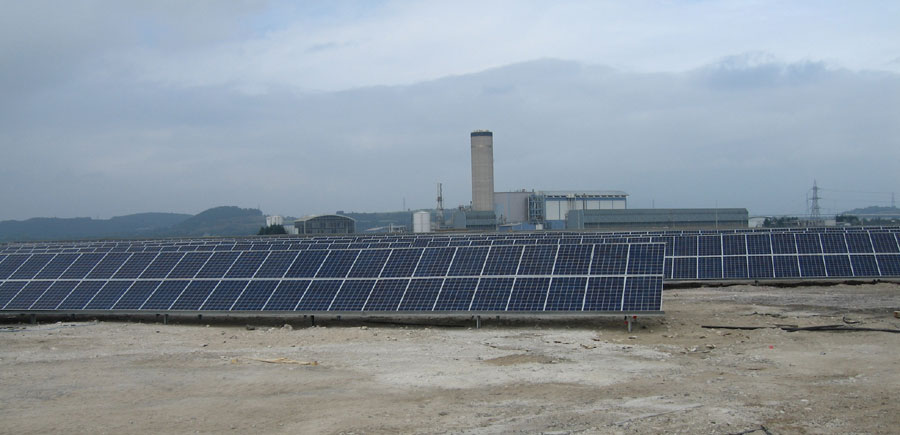Construction of a multi-million pound solar power plant in Wales is near completion, civil and structural engineers Rodgers Leask has announced.
The company was appointed by regeneration specialist St Modwen, which obtained planning permission for a five mega-watt photovoltaic power installation at a former BP Chemicals works site in Port Talbot.
The Baglan Bay power plant, which will cost around £5 million to build, will generate enough clean electricity to power more than 1,200 homes a year.
Approved by Neath Port Talbot County Borough Council, it is the first link to a comprehensive regeneration scheme on brownfield land. St. Modwen’s plans propose that 20 acres of the total 1,050-acre site will be covered in 20,000 solar photovoltaic panels generating 5MW of power a year.
The photovoltaic park is part of St. Modwen’s overall £3 billion regeneration strategy across South Wales.
St Modwen’s South Wales and South West regional director Rupert Joseland said: “Baglan Bay is a major regeneration project to transform over 90 acres of disused brownfield land into a new employment site with the potential of creating thousands of jobs locally.
“The energy park provides the ideal conditions for a photovoltaic park and will feature solar cell panels that produce renewable energy with no emissions. We are delighted to have the support of Rodgers Leask on the project,” he added.
Andrew Catmur, who leads Rodgers Leask’s Birmingham office, said: “This is our first solar plant project and it is something that we are all excited to be involved in. There is a vast surplus of brownfield land in this area of Wales and this is an excellent way of using land that may have no other tangible economic use in the next 25 years. We are interested in working on similar schemes where we can add value through our technical expertise and engineering experience.”
The project is due to completed in January 2014.
Rodgers Leask’s civil engineering and geoenvironmental teams, based in Derby and Birmingham, are working on some of the largest regeneration schemes in the country to transform redundant, contaminated land into commercial and residential end uses. The company’s current portfolio of schemes run from St Helens to Exeter, and Yorkshire to Sussex.
Rodgers Leask, which also has offices in London, has designed multi-storey steel and concrete framed structures for a variety of clients ranging from multi-million pound manufacturing facilities through to commercial offices, institutional and industrial buildings, residential properties, hotel and leisure centres of varying size and complexity.



















